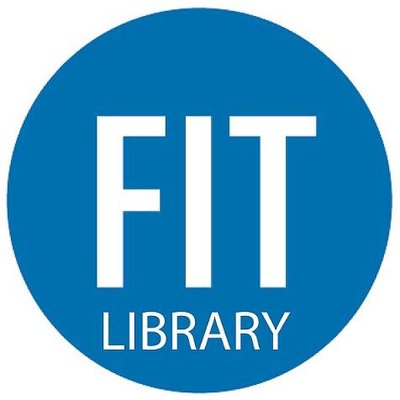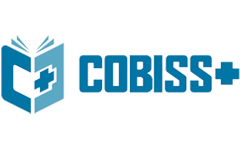The Teaching Material of Drama Appreciation based on Project-based Learning by Interactive Multimedia-assisted
DOI:
https://doi.org/10.61841/93gr2a53Keywords:
teaching materials, Drama Appreciation, project-based learning, multimediaAbstract
This study aims to develop teaching materials for Drama Appreciation based on project-based learning with multimedia assistance in institutions. During this time, the teaching materials used in the learning process are in the form of textbooks so that students cannot provide contextual experience. This study is a research development using the ADDIE model, which is at the Analysis and Design stages. A needs analysis is carried out to determine the effectiveness of the Drama Appreciation teaching materials used so far in learning by giving questionnaires to lecturers and students. The results of the analysis showed that both lecturers and students expected the development of teaching materials for Drama Appreciation courses. While the design stage is designing Drama Appreciation teaching material development based on the findings of the needs analysis. The design of teaching materials uses multimedia-assisted project-based learning (PjBL) stages. The design was developed in the form of multimedia-assisted teaching materials using Macromedia Flash 8, lecturer manuals, student manuals, and model books. Products that are produced go through stages of validation by material experts, linguists, and IT experts.
Downloads
References
1. Albalawi, Bashayer Raghian. (2014). Effectiveness of Teaching Eglish Subject using Drama on the Development of Students’ Creative Thinking. IOSR Journal of Research & Method in education (IOSR-JRME) e-ISSN: 2320-7388.pISSN: 2320-737X Volume 4, Issue 6 Ver . I (Nov-Des, 2014)
2. Alsadhan, Omar Sami Alhomod dan Mohd. Mudasir Shafi. (2017) Content In E-Learnig Multimedia Based ELearning: Design and Integration Of Multimedia Content In E-Learning.
3. Babiker, M., & Elmagzoub, A. (2015). For Effective Use of Multimedia in Education, Teachers Must Develop Their Own Educational Multimedia Applications. Turkish Online Journal of Educational Technology-TOJET, 14(4), 62-68.
4. Choy, S. Chee & Phaik Kin Cheah. (2009). Teacher Perceptions of Critical Thinking Among Students and its Influence on Higher Education. International Journal of Teaching and Learning in Higher Education. 2009, Volume 20, November 2, 198-206 ISSN 1812-9129.
5. Elaldi, Senel & Nazli Sila Yerliyurt. (2017). The Efficacy of Drama in Field Experience: A Qualitatıve Study Using Maxqda. Journal of Education and Learning; Vol. 6, No. 1; 2017 ISSN 1927-5250 E-ISSN 1927-5269
6. Erdogen, Tolga. (2013). The Effect of Creative Drama Method on Pre-service Classroom Teachers’ Writing Skills and Attitudes towards Writing. Australian Journal of Teacher Educational. Vol 38.1, Januari 2013
7. Gall, M. D., Gall, J. P., & Borg, WR. (2003). Educational Research. Boston: Pearson Education, Inc.
8. Hasanuddin WS. (2009). Drama Karya dalam Dua Dimensi (Kajian Teori, Sejarah, dan Analisis). Bandung: Angkasa.
9. Kosucu, E., & Hursen, C. (2017). The Effect of Creative Drama Activities on Candidate Teachers' Self-Directed Skills. Cypriot Journal of Educational Sciences, 12(3), 148-156.
10. Leow, Fui Theng Dan Mai Neo. (2017). Interactive Multimedia Learning: Innovating Classroom Education In A Malaysian University.
11. Miller, Sara & Lisa Pennycuff. (2008). The Power of Story: Using Storytelling to Improve Literacy Learning. Journal of Cross-Disciplinary Perspectives in Education. Vol 1, No. 1 (May 2008) 36-43.
12. Milkaresti, Pamela dan Yusra D. (2018). Pengembangan Bahan Ajar Mata Kuliah Drama dengan Pendekatan Berbasis Masalah. Vol. 7, No.2, Agustus 2018, P-ISSN: 2089-3973, E-ISSN: 2615-7705 DOI: https://doi.org/10.22437/pena.- v7i2.5314
13. Rodríguez-Bonces, M. (2017). A Basis for the Design of a Curriculum Incorporating Music and Drama in Children's English Language Instruction. Profile Issues in TeachersProfessional Development, 19(2), 203-223.
14. Sablonniere, Roxane de la, Donald M. Taylor & Nazgul Sadykova. (2009). Challenges of Applying a Student-Centered Apprach to Learning in The Context of Education in Kyrgyztan. International Journal of Educational Development G. Model EDEV-1142; No.of Pages 7 doi: 10.1016/j.ijedudev.2009.01.001
15. Shakfa, Mahmoud Dawoud Ali. (2012). Difficulties Students Face in Understanding Drama in English Literature at the Islamic University of Gaza (IUG). English Language Teaching; Vol. 5. No. 9; 2012 ISSN 1916-742 E-ISSN 1916- 4750. Published by Canadian Center of Science and Education.
16. Syofiani, Hasanuddin WS, dan Syahrul R. (2019). Lecturers’ and Students’ Perception toward the Importance of Development Multimedia-assisted Drama Appreciation Teaching Materials in College. Proceeding ICLLE 2019. http://eudl.eu/proceedings/ICLLE/2019
17. Udim, D. K., & Etim, E. A. (2016). Use of Multimedia in Teaching and Learning of Political Science in University of Uyo, Akwa Ibom State, Nigeria. Research in Pedagogy, 6(2), 154-179.
Downloads
Published
Issue
Section
License
Copyright (c) 2020 AUTHOR

This work is licensed under a Creative Commons Attribution 4.0 International License.
You are free to:
- Share — copy and redistribute the material in any medium or format for any purpose, even commercially.
- Adapt — remix, transform, and build upon the material for any purpose, even commercially.
- The licensor cannot revoke these freedoms as long as you follow the license terms.
Under the following terms:
- Attribution — You must give appropriate credit , provide a link to the license, and indicate if changes were made . You may do so in any reasonable manner, but not in any way that suggests the licensor endorses you or your use.
- No additional restrictions — You may not apply legal terms or technological measures that legally restrict others from doing anything the license permits.
Notices:
You do not have to comply with the license for elements of the material in the public domain or where your use is permitted by an applicable exception or limitation .
No warranties are given. The license may not give you all of the permissions necessary for your intended use. For example, other rights such as publicity, privacy, or moral rights may limit how you use the material.
















